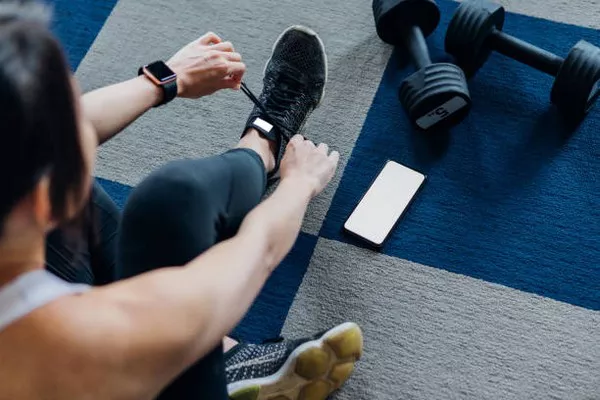Leg swelling, also known as edema, can be a frustrating condition caused by various factors such as fluid retention, poor circulation, and lifestyle choices. One common question is whether losing weight can help reduce leg swelling. This comprehensive article will explore the relationship between weight loss and leg swelling, providing practical fitness and weight loss suggestions to help alleviate this condition. The article is written in clear and simple language, making it accessible to everyone.
Understanding Leg Swelling
What Causes Leg Swelling?
Leg swelling occurs when fluid accumulates in the tissues of the lower limbs. The most common causes include:
Fluid Retention: Often due to standing or sitting for long periods, hormonal changes, or consuming too much salty food.
Poor Circulation: Can be caused by obesity, heart conditions, or vein problems.
Injuries: Such as fractures or sprains.
Medical Conditions: Including kidney disease, liver disease, and certain medications.
How Does Weight Affect Leg Swelling?
Excess body weight can put additional pressure on the veins in your legs, leading to poor circulation and fluid retention. This can cause or worsen leg swelling. Losing weight can alleviate this pressure and potentially reduce the symptoms.
The Role of Weight Loss in Reducing Leg Swelling
Benefits of Weight Loss for Leg Swelling
Improved Circulation: Reduces the pressure on the veins, allowing blood to flow more easily.
Reduced Fluid Retention: Less fat tissue means less fluid accumulation.
Decreased Inflammation: Weight loss can lower inflammation levels in the body, which can reduce swelling.
How Much Weight Should You Lose?
There’s no one-size-fits-all answer, but even a modest weight loss of 5-10% of your body weight can make a significant difference in reducing leg swelling and improving overall health.
Fitness and Weight Loss Suggestions
Cardiovascular Exercises
Cardio exercises are great for burning calories and improving circulation. Here are some effective options:
1. Walking
Why It Works: Walking is low-impact and easy to start.
How to Do It: Aim for 30 minutes of brisk walking daily. Increase the duration as you build stamina.
2. Swimming
Why It Works: It’s easy on the joints and provides a full-body workout.
How to Do It: Start with 20-30 minutes of swimming laps. Focus on maintaining a steady pace.
3. Cycling
Why It Works: It’s a great way to tone your legs and improve cardiovascular health.
How to Do It: Start with 20-30 minutes of cycling. Use a stationary bike if outdoor cycling isn’t feasible.
Strength Training
Building muscle can help increase metabolism and support weight loss.
1. Leg Exercises
Squats: Excellent for building leg strength.
Lunges: Targets the thighs and calves.
Calf Raises: Focuses on the lower leg muscles.
2. Upper Body Exercises
Push-Ups: Great for upper body strength.
Dumbbell Rows: Helps improve posture and upper back strength.
Shoulder Presses: Targets the shoulders and arms.
Flexibility and Mobility
Improving flexibility and mobility can aid in reducing leg swelling.
1. Stretching
Why It Works: Helps relieve tension and improve circulation.
How to Do It: Incorporate stretches like hamstring stretches, calf stretches, and quad stretches into your routine.
2. Yoga
Why It Works: Enhances flexibility and reduces stress.
How to Do It: Start with basic poses like Downward Dog, Warrior, and Child’s Pose. Join a class or follow online tutorials.
See Also: Will Losing Weight Help With Leg Pain
Diet and Nutrition
Foods to Include
Lean Proteins: Chicken, turkey, fish, and plant-based proteins like beans and lentils.
Whole Grains: Brown rice, quinoa, whole wheat bread, and oats.
Fruits and Vegetables: Rich in fiber and low in calories, they help with satiety.
Healthy Fats: Avocado, nuts, seeds, and olive oil.
Foods to Avoid
Processed Foods: Often high in salt, sugar, and unhealthy fats.
Sugary Beverages: Such as soda and fruit juices with added sugar.
Salty Foods: Can contribute to fluid retention.
Hydration
Importance: Staying hydrated helps flush out excess fluids and toxins.
How Much: Aim for 8-10 glasses of water daily. Adjust based on activity level and climate.
Lifestyle Changes
Reducing Salt Intake
Excess salt can lead to fluid retention. Aim to consume less than 2,300 mg of sodium per day.
Elevating Legs
Elevating your legs can help reduce swelling by encouraging fluid to flow back towards the heart. Aim to elevate your legs above heart level for 15-20 minutes, several times a day.
Wearing Compression Stockings
Compression stockings can help improve circulation and reduce swelling. Consult with a healthcare provider to find the right type and fit.
When to See a Doctor
While lifestyle changes can significantly reduce leg swelling, it’s essential to consult with a healthcare provider if you experience:
Sudden or Severe Swelling: Especially if it’s only in one leg.
Pain or Tenderness: In the leg, which could indicate a blood clot.
Skin Changes: Such as redness, warmth, or ulcers.
Other Symptoms: Like shortness of breath or chest pain, which could indicate a more severe condition.
Conclusion
Losing weight can be an effective way to reduce leg swelling by improving circulation, reducing fluid retention, and lowering inflammation. A combination of cardiovascular exercises, strength training, flexibility routines, and a balanced diet can help you achieve your weight loss goals and alleviate leg swelling. Remember to make gradual changes and consult with a healthcare provider if needed. By taking a holistic approach to your health and fitness, you can enjoy a more active and comfortable life.


